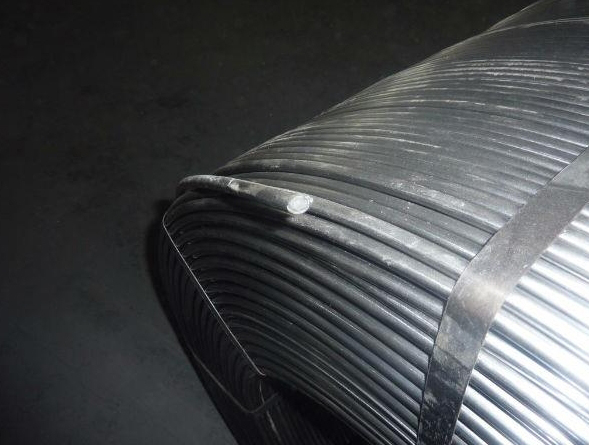
Inclusion control in steel is a challenging issue. Several methods have been developed for controlling the concentration and composition of oxide inclusions in steel.
However, the effectiveness of these measures is often limited by the difficulty of measuring the total oxygen in real-time to make actionable decisions. This is where calcium treatment comes in.
Steels are prone to the formation of inclusions that may result in weld cracking due to interfacial strains (lamellar tearing) or hydrogen accumulation at the interface (hydrogen pressure induced cracking). Forging and rolling processes can also elongate these nonmetallic inclusions, leading to anisotropy of toughness and ductility. In order to achieve a balance between strength and ductility the number, size and morphology of these inclusions has to be optimized along the production route.
The modification of the shape of sulphide inclusions by calcium treatment is one of the most essential processes for improving the workability of these materials. When injected into the steel melt, calcium reacts with sulphur and oxygen in inclusions, forming liquid calcium aluminate. This enables the inclusions to be transformed into soft (Mn, Ca, Mg)S or (Ca, Mn)S with oxide cores.
Inclusion compositions analyzed by SEM/EDS are usually subject to analysis artifacts caused by heavy atoms of Fe attenuating the X-rays generated during sample-inclusion-beam interaction. To mitigate this effect, it is recommended to collect samples of the inclusion distribution containing mostly pure oxides, as these are less susceptible to matrix effects. The composition of these inclusions can then be calculated using a thermodynamic model.
In the past decades, remarkable progress has been made in inclusion control thanks to a deeper understanding of the interplay between thermodynamics, slag composition, and steelmaking processes. However, there are still some issues that need to be improved. One of these is the distribution characteristics of inclusions.
Secondary derived-inclusions mainly refer to those heterogeneous components different from iron (Fe)-based matrix, which have been generated during steel smelting process for impurity removal and characterized by their non-metallic structure. Such non-metallic inclusions include oxide inclusions and sulfide inclusions.
The main oxide inclusions in the molten steel are CaO and CaO-Al2O3. These oxide inclusions will be wrapped by sulfide during solidification, forming complex inclusions with an oxide core and a sulfide shell. This kind of inclusion is difficult to assess because the sulfide layer prevents the transmission of X-rays, making it hard to analyze their composition.
When Mg treatment was applied to the molten steel, the sulfide inclusions showed less deformation during rolling and could be more easily assessed. Moreover, the Mg treatment helped to modify oxide inclusions to form MgO*Al2O3, making it easy to detect their composition by SEM-EDS. Therefore, the Mg-Ca treatment was a more effective way of inclusion modification than that by Ca alone. It also helped to improve the assessment of sulfide inclusions in ERW/HFI welded pipes.

The researchers measured inclusions by SEM-EDS on a machined steel sample with a detecting area of 10 mm x 10 mm. The inclusions were counted and the composition of each kind of inclusion was determined. Inclusions included single MnS, MnS with an oxide core, and CaO-Al2O3 type inclusions. The number of each kind of inclusion did not differ significantly between the original billet and re-melted steel. However, the content of bound oxygen in the re-melted sample was significantly lower than that of the original billet.
The addition of 5 ppm of Mg to the 49MnVS3 and 16MnCrS5 steels changed the composition of complex inclusions. Specifically, the oxide core of MnS with an Al2O3 core became MgO*Al2O3. The proportion of this kind of inclusion decreased after Mg-Ca treatment. This helped to restrict the deformation of MnS inclusions into a long strip and reduce clogging in the continuous caster.
The Mg-Ca treatment also improved the assessment of sulfide inclusions in the hot rolling process. Compared to the Ca treatment, the index number for the average fine series and thick series showed a big improvement. In addition, the Mg-Ca treatment modified oxide inclusions into dispersive distributed tiny inclusions and provided more heterogeneous nucleation points for MnS precipitation. This result is consistent with industrial observations.

Write a Message